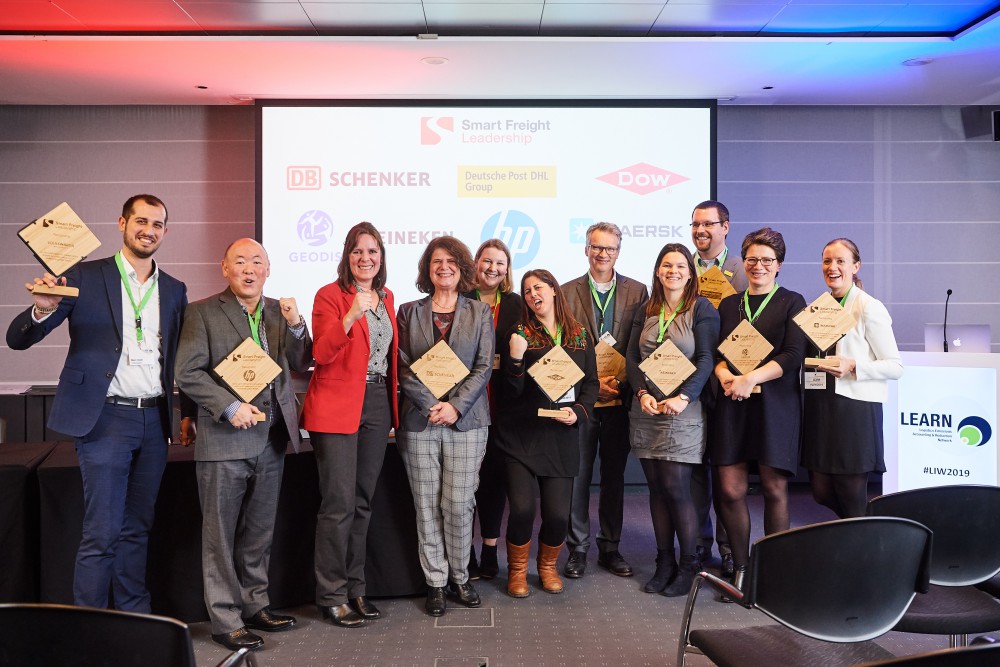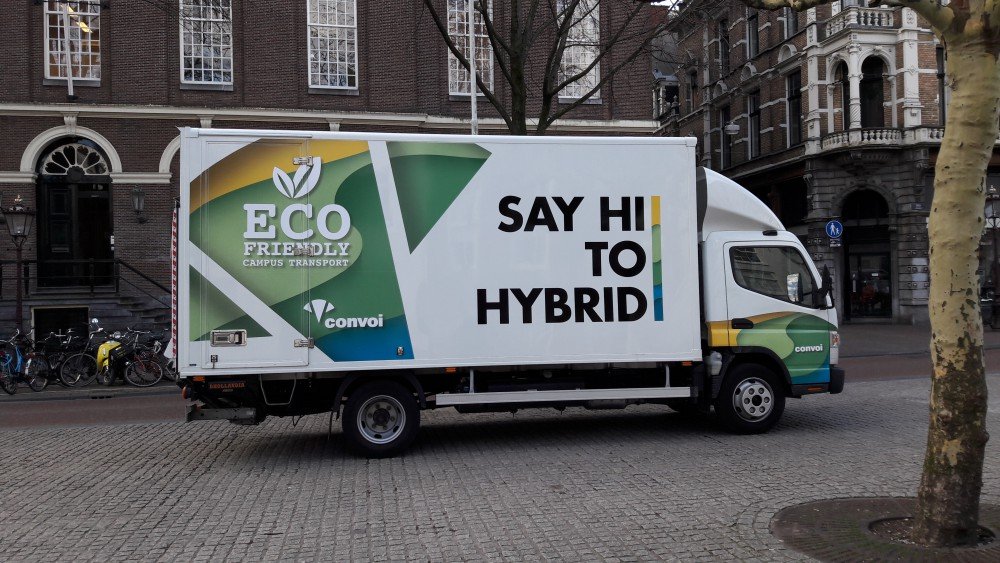To give you an idea of the challenge ahead: freight demand is expected to triple between 2015 and 2050, causing CO2 emissions to rise by 76 percent according to the International Transport Forum. Yet to live up to expectations of the Paris Agreement we need to move in the opposite direction: taking freight growth into consideration, emissions essentially need to be reduced by 55-80 percent, depending on whether a 2 or 1.5-degree scenario is followed. This would require a complete transformation of the sector that questions how the logistics system is designed and whether freight is indeed necessary.
Many would argue that this is an impossible target — the freight sector is not in control of its own destiny, but merely responds to market demand. Freight is indeed the Cinderella of the climate movement, largely ignored by both businesses and governments. Only 33 of 100 multinationals reported their outsourced logistics emissions in 2017. Governments overlook freight in infrastructure, policies and plans — for example only 13 percent of countries mention freight explicitly in their climate plans or ‘NDCs’. The sector is fragmented and margins are too thin to free up investment capital. And even if there was money available, why spend it on transport? Despite the potential for emission reduction, the costs per tonne to reduce CO2 in transportation is higher than that of any other sector.
But we can look at it the other way: if freight is so inefficient and prone to commercial pressures, doesn’t that provide the perfect incentive for change? The signs of change are unmistakable — technological innovation, new business models for moving freight, big data, and so forth. So shouldn’t the climate movement follow these initiatives rather than going at it alone?
Multinationals can trigger change through smart freight leadership
Only through the collaboration of businesses, governments, research and civil society can a sector transformation be realized. However, in this highly commercial sector, the trigger lies predominantly with businesses, especially multinationals with global brands and value chains. A more efficient freight and logistics sector is also a more competitive and environmentally sustainable one. As buyers (‘shippers’) or suppliers (‘carriers’) of freight services, they therefore have the power to take action across their extensive supply chains.
By acting as leaders, they will both inspire others and set the norm for the industry; society will also benefit from the improvement in climate and health. This is known as “Smart Freight Leadership.” Companies show leadership in three ways:
- reporting emissions and setting reduction targets;
- implementing solutions as buyers or suppliers of freight services that reduce emissions;
- and collaborating and advocating for sector-wide uptake.
The good news is that there are global standardized guidelines and approaches, as well as many examples that can be followed to help support the industry in its attempt to put theses initiatives into practice.
1. Reporting emissions and setting reduction targets
If you cannot measure something, you cannot improve it. For many companies, comparing greenhouse gas emissions (GHG) across different modes of transport can be like comparing apples to oranges given the range of methodologies — but not for much longer. The GLEC Framework is the only globally recognized methodology for calculating and reporting logistics and GHG emissions by companies across the multimodal supply chain. A growing number of multinationals, such as HP Inc., The Dow Chemical Company and Volkswagen Group Logistics, have adopted the GLEC Framework, which is consistent with the GHG Protocol and recommended by the global disclosure program CDP. Over 30 companies have applied it to their logistics and transport chains through the EC-funded LEARN project.
More than 500 companies have committed to setting ambitious emission reduction targets through the Science-Based Targets Initiative (SBTI). However, few include freight and logistics in their targets. Together we developed the SBTI guidance for the transport sector, which will be expanded to include sea transport and other modes of transport separately. HEINEKEN recently announced their plans to include logistics in their SBTI targets; they have also committed to increasing their share of renewable energy in production from 14 percent today to 70 percent by 2030. DP-DHL Group was the first logistics service provider (LSP) to commit to reducing all logistics-related emissions to zero by 2050.
2. Implementing solutions as buyers or suppliers of freight services that reduce emissions
Professor Alan McKinnon, in his book Decarbonizing Logistics, has identified five solution areas to reduce carbon emissions: carbon content of energy, fleet energy efficiency, asset utilization, freight transport modes, and freight demand. What solutions companies can implement or influence depends on whether they are buyers and/or suppliers of freight services. Three ways of achieving this are:
- through the buyer-supplier relationship;
- through the role of buyer and/or supplier;
- and through collaborations between buyers that share similar logistics and supply chains.
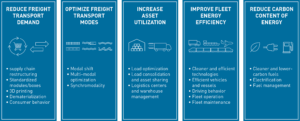
To begin, buyers of freight services — or shippers — can leverage change through their contracts with logistics service providers and carriers. Multinationals have stated various requirements, leaving carriers with the administrative burden of complying to different requests from customers. Both carriers and multinationals would thereby benefit from harmonized guidelines. The Smart Freight Procurement Framework (to be published in June 2019) offers some guidance on how to include freight emissions criteria in corporate procurement policies and practices, supported by examples from companies. Home Depot, Johnson & Johnson, IKEA, NIKE, Schneider Electric, Unilever and Walmart are some of the multinationals with proactive procurement policies.
This can be supplemented with customer relationship management services. What is CRM? visit this website!
For example, the DowGOL award in Brazil recognizes The Dow Chemical Company’s best logistics providers, such as warehouses, terminals, carriers and distributors, and includes criteria based on sustainability. The award drives performance: in 2015, 83 percent of the carriers showed evidence of initiatives aimed at reducing GHG emissions in their operations.
Suppliers have increasingly begun to include low carbon logistics in their customer service offerings. For example, Maersk signed ‘Carbon Pacts’ with several customers including Signify, BMW and Tetra Pak in order to reduce its carbon footprint from maritime transport. GEODIS integrates climate solutions in its offerings to clients; for example, they use natural gas and electric vehicles for the delivery of their goods, with a payback period of five or so years. Similarly, DB Schenker offers eco-solutions for every mode of transportation, allowing customers to reduce or compensate their CO2 emissions during every step in the supply chain.
Multinational shippers can also implement solutions and drive innovation in the industry. HP Inc, for example, now fits three laptops in one box, and 31 percent more laptops can fit on the pallet shipped to stores. Shipping notebooks from China to other countries in Asia, Europe and the Americas via maritime transport instead of using air freight services reduces 40,000 tonnes of CO2. Trafigura helped establish a multi-transport corridor in Colombia using 120 barges and 20 tugs to help move both wet and dry freight from the river terminal to coastal ports, reducing truck journeys as well as 24 percent of GHG emissions.
Volkswagen Group Logistics localized production in order to reduce logistics needs; they currently rely upon lightweight containers, warehouse insulation and lighting, and they maximize load factors and consolidating loads to reduce the number of trucks needed. Two LNG-powered vessels that carry cars between Europe and North America will reduce up to 25 percent of their CO2, 30 percent of their Nitrogen oxide (NOx) and eliminate Sulfur oxide (SOx) from bunker fuel in 2019. Unilever applies innovation at every level of its logistics supply chain, which resulted in a 31 percent improvement in its CO2 efficiency from 2010 to 2017. For example, changing the pallet size — adding one extra layer — increased the load fill of ice-cream products by 11 percent, created a savings of €500,000, and reduced CO2 emissions in China.
Smartphone apps that connect companies who need to transport goods with small trucking providers who have extra capacity could further reduce ‘empty miles’ by 10 percent as well as brokerage fees. It would also add flexibility to the supply chain. IKEA is known for designing furniture to assemble at home in order to reduce the amount of truck space needed. They got creative by selling flat pack Easter eggs and bunnies — no more need to waste space!
LSPs and carriers with direct control of fleet operations can take action as well. Maersk has been able to reduce 47 percent of its CO2 per container since 2007 by implementing fuel-efficient vessels, technical retrofitting, and improved planning and network optimization. DP-DHL Group deployed more than 9,000 StreetScooter electric delivery vehicles in its mail and parcel operations. The company already delivers 28 percent of its own first and last mile services with clean pick-up and delivery solutions — whether by foot, StreetScooter, e-bike or cargo bike.
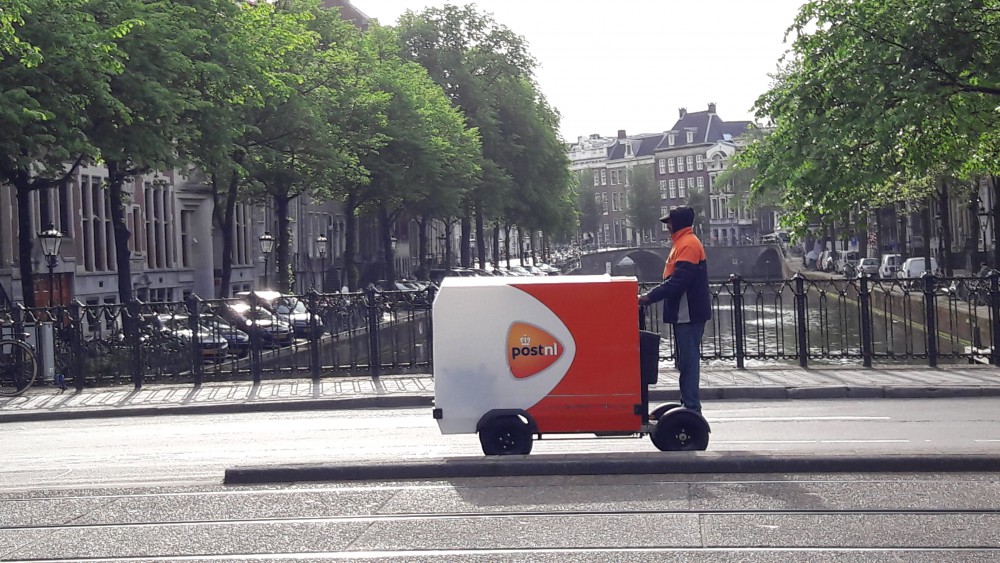
One of the challenges of road freight is its fragmentation, with operators lacking the knowledge or capacity needed to improve efficiency. To help out, a holistic and integrated Smart Truck Fleet Management approach was developed with five energy management pillars:
- fuel management;
- driver and staff skills development;
- vehicle, system and component specification and preventive maintenance;
- performance monitoring;
- and the utilization of information technology.
Having such a framework in place can help harmonize the various strategies of road freight operators, as well as facilitate exchange between local initiatives. A Smart Transport Manager Training course with these five pillars is available to help upskill operational transport managers; it can also help them develop an action plan for fleet energy efficiency improvement. Over 80 fleet managers were trained in China for carriers that service IKEA and other multinationals, and the training is now taking place in South Africa and in other markets.
Finally, multinationals with overlapping supply chains can also collaborate with one other. The Dow Chemical Company collaborated with Procter & Gamble to reduce the environmental impact from the transport of a Dow-supplied raw material by switching a portion of the shipments from road freight to rail cars. This resulted in a reduction of their transportation CO2 emissions by over 1,400MT annually and cut diesel fuel use by over 180,000 gallons per year. Five product manufacturers and an LSP worked together to bundle orders for Dutch supermarket Jumbo in shared trucks and make arrangements for freight backhauls. The result: 40 percent less supplies stacked at the distribution center, 40 percent less deliveries, 30 percent higher truck load factors, 35 percent less kilometers to cross and a carbon footprint reduced by 35 percent.
3. Collaborating and advocating for sector-wide uptake
It is the limited pace and scale of change that is the biggest threat to achieving the Paris Agreement Goals, with the logistics sector being no exception. Companies must collaborate and advocate for sector-wide uptake.
First, green freight programs must bring together national companies and multinationals in order to report and reduce logistics emissions. Examples include SmartWay in the US and Canada, Clean Cargo Working Group, Green Freight Asia, Lean and Green in several European countries, and the Brazilian Green Logistics Program. Companies, governments and other stakeholders can advocate for their continued growth through the UN-led Global Green Freight Action Plan, which supports the Paris Climate Agreement.
Editor’s Picks – Related Articles:
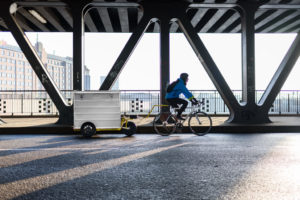
“NÜWIEL and its innovative electric cargo trailer“
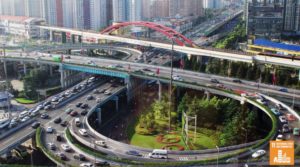
“How Sustainable Transportation Drives Sustainable Cities”
Second, multinationals can play a significant role in ensuring that logistics emissions are included in sectoral standards and broader climate and sustainability initiatives. For example, HP Inc. ensured that the GLEC Framework was incorporated in the EPEAT IT sector eco-label standards and continues to advocate for its inclusion in the Gartner Logistics Supply Chain Top 25. Numerous other sustainable transport or climate initiatives are supported by businesses, such as the Transport Decarbonisation Alliance, the Sustainable Mobility for All (Sum4All), the Global Maritime Forum and the We Mean Business coalition.
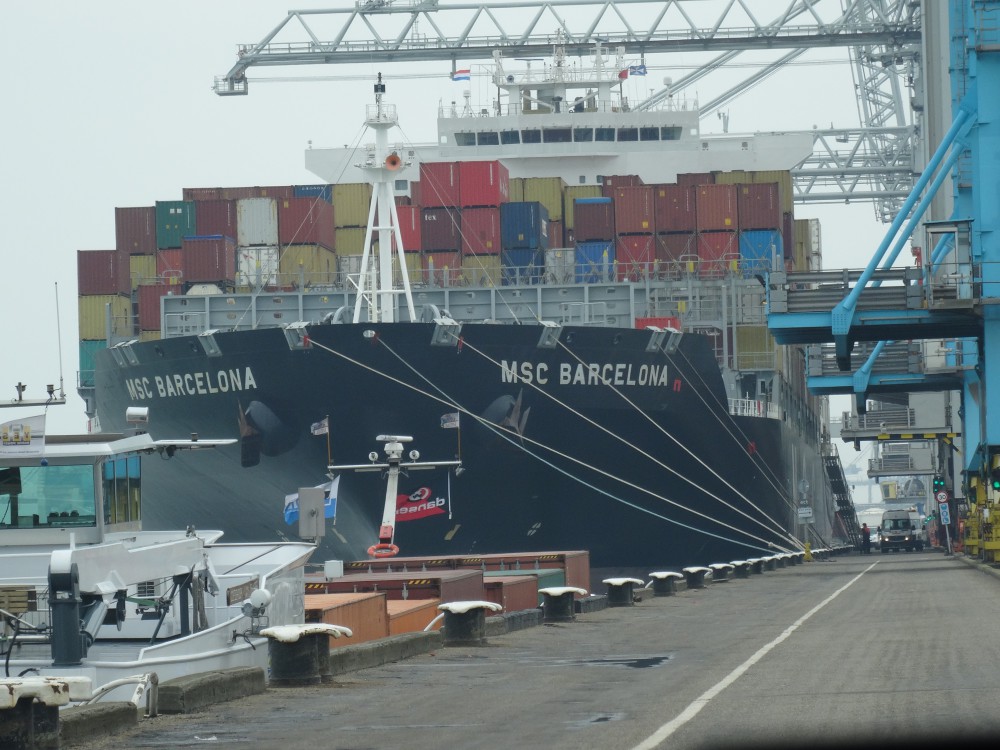
Companies can also join campaigns; DB Schenker, for example, is gradually converting its own fleet of distribution vehicles to electro-mobility, linked to the global EV100 campaign. Fashion brands that signed the Fashion Industry Charter for Climate Action have also expressed their commitment to low-carbon logistics.
Third, supportive policy is key to creating a level playing field and raising business standards. For example, Maersk and other ocean freight carriers actively push for increased regulations and an incentivisation mechanism regarding GHG emissions by means of the International Maritime Organization (IMO). More than 30 companies and other organizations advocated for more ambitious CO2 targets for the EU in order to reduce CO2 emissions of commercial vehicles by minus 20 percent by 2025 and minus 35 percent by 2030. Scania contributed to the China GB1589 standard on dimensions, axle load and masses for motor vehicles, trailers and combination vehicles. This standard will accelerate the transition to a more safer and efficient truck fleet in China.
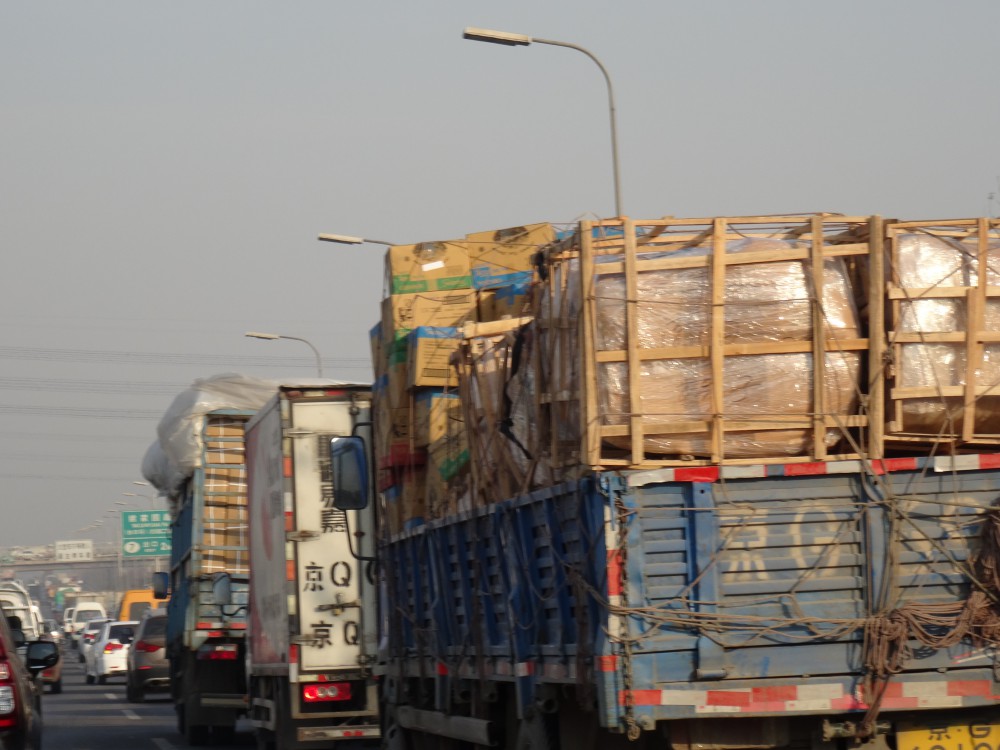
Calls for carbon pricing are increasing in The Netherlands and elsewhere. This makes climate an integral part of businesses in the transformation to a more efficient and sustainable sector. We have no time to loose. We must demand that companies show Smart Freight Leadership and that governments and other stakeholders support them. Together we can make low emission freight happen and we can finally win this climate battle!


